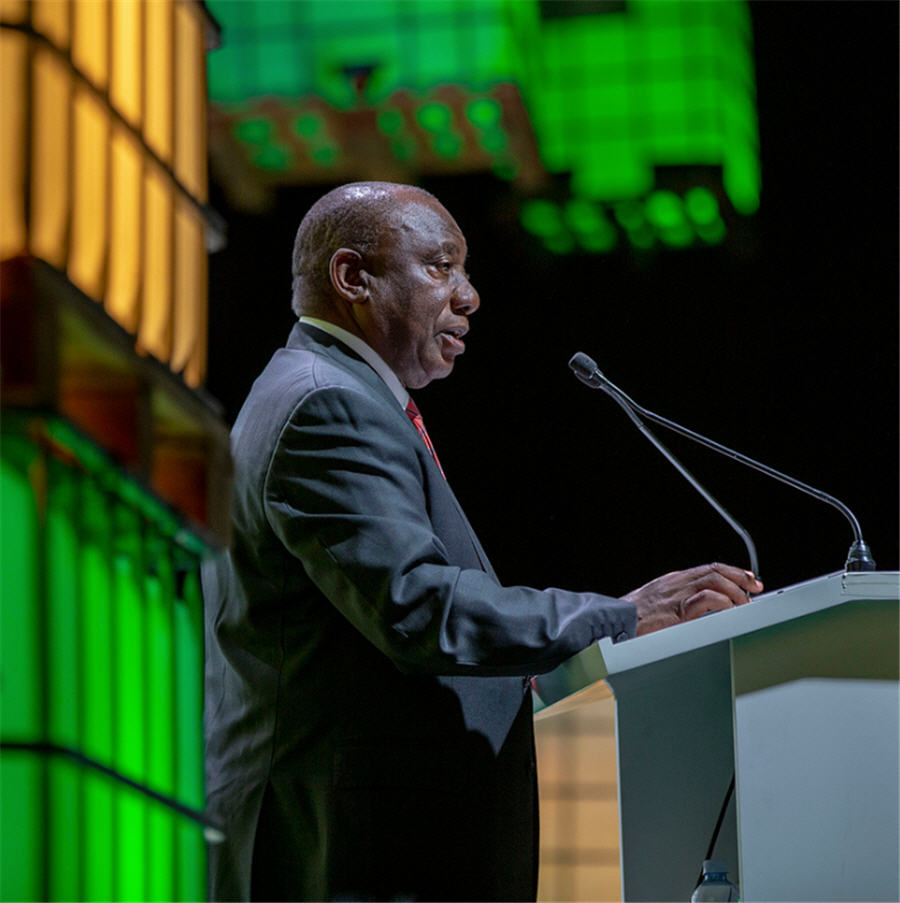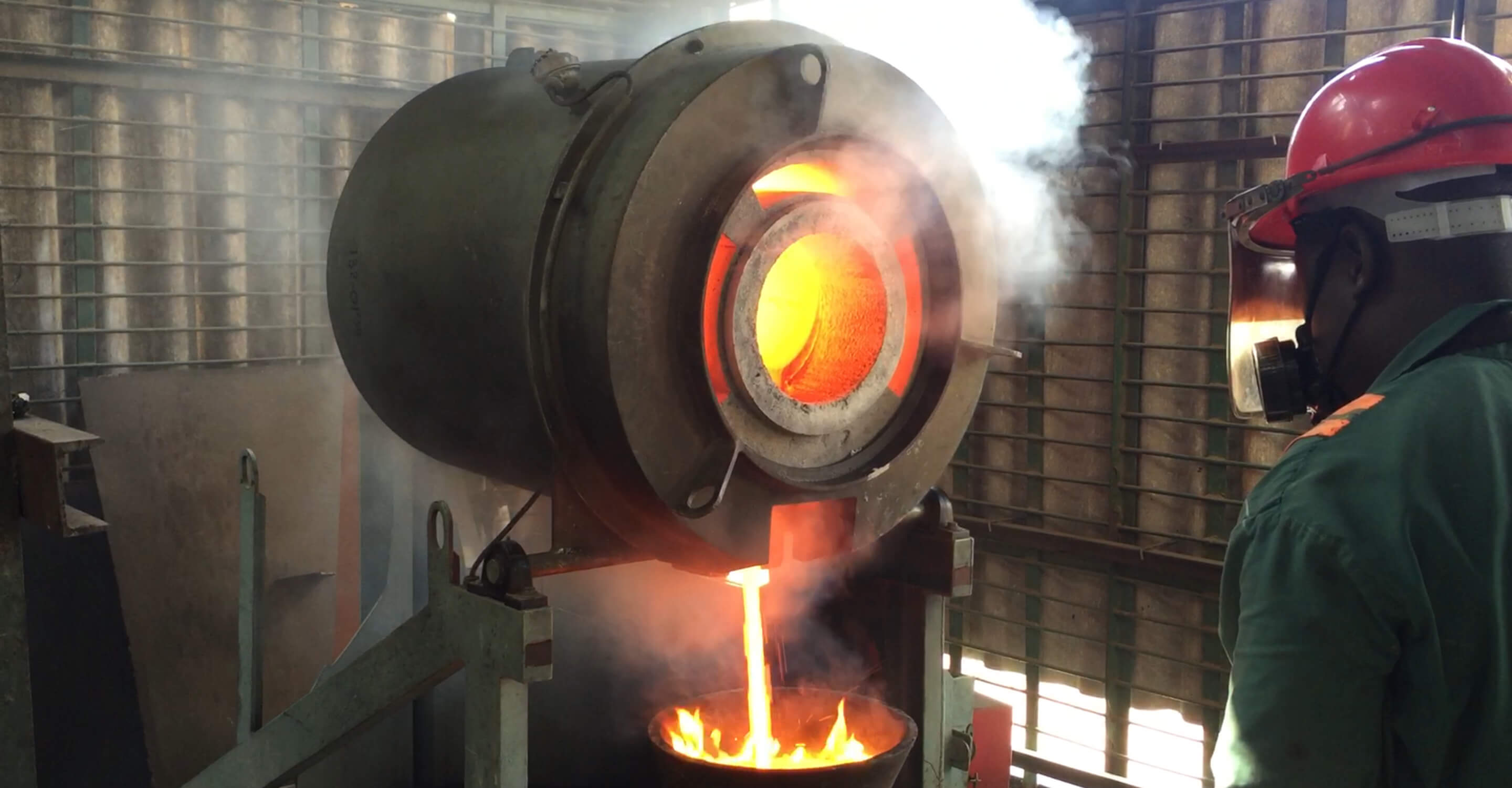Africa Mining Indaba: ‘Let’s talk,’ Ramaphosa tells producers

Executives, investors and government officials meet in Cape Town this week at the African Mining Indaba, the continent’s biggest gathering of one of its most essential industries.
The gold sector is a hot topic this year, after two giant deals reignited interest in bullion producers, prompting speculation over who might be next. Tailings dams are also in the spotlight, after Vale SA’s disaster in Brazil.
Other Mining Indaba coverage: Monday highlights: Dam Safety, Zambia Taxes, Ford on Cobalt Gold Miners Get Their Mojo Back as Giant Deals Revive Allure Palladium Rally Offers Lifeline to Stressed South African Miners
Here are the latest developments, updated throughout the day.
Highlights from Tuesday:
AngloGold’s CEO suggested the company may provide an update on plans to streamline its assets when it reports annual results this month. Barrick chief Mark Bristow said the industry needs to change its mindset on “instant gratification.” Anglo Platinum’s CEO predicted palladium will remain in deficit for 10 to 15 years.
Ramaphosa promises support
South African President Cyril Ramaphosa emphasized support for the mining sector and said he wants to avoid a return to strained relations between the government and industry.
“We recognize the critically important role that mining can and must still play in shaping the future of our country,” he said. “We want to see you not in the courts, but in your boardrooms where we can talk and debate.”
Commenting on concerns about security of power supply, Ramaphosa said that South Africa will not allow state-owned utility Eskom Holdings SOC Ltd. to fail. In the coming days, the government will announce a package of measures to improve Eskom’s operational, structural and financial position and ensure energy supply, he said.
Exxaro coal contracts
South Africa’s Exxaro Resources Ltd. started supplying embattled state-owned Eskom Holdings SOC Ltd. with coal under a one-year supply contract in December, as the utility struggled to secure enough fuel for its power stations.
“Eskom was under a lot of crunch for immediate supplies, we had to help in the short term,” Nombasa Tsengwa, the company’s head of coal, said in an interview. “This was a special dispensation that was given to Eskom by National Treasury and the Public Enterprises Ministry to alleviate short term pressure.”
Exxaro is still waiting for a response from its offers to supply coal on a long term and guarantees that Eskom would continue to take the coal for such a period, she said.
Palladium deficits boost platinum miners
The world’s biggest platinum producer expects sister metal palladium will remain in a supply shortfall for the next 10 to 15 years, said Anglo American Platinum Ltd. Chief Executive Officer Chris Griffith. Amplats, as the company is known, and its South African rivals mine palladium and rhodium alongside platinum.
There’s also an appreciation that the industry is being more responsible in terms of adding new supply, said Charl Malan, senior analyst and portfolio manager at Van Eck Associates Corp.
“Supply is going to be the part of the equation that is going to be the most important for us to focus on,” he said. “We are seeing the management is looking at real value creation not volume creation.”
Barrick vs Congo
Barrick’s Bristow and a senior Democratic of Congo official, speaking together in a session on the country’s new mining rules, seemed to disagree over whether the issue had been settled or remained open for debate.
“The law is already promulgated, everything has been explained,” said Mining Ministry Secretary General Joseph Ikoli. “We worked in a cooperative way with the government, the industry and civil society.”
Bristow immediately pushed back. “The conversation is still ongoing,” he said. “When Joseph says the debate is finished and that we need to move forward, the debate never started.”
The Barrick CEO also had some strong words for Ikoli on the government’s decision to remove a 10-year stability clause that was present in previous mining legislation. “That’s like breaking your own law,” he said.
On a more conciliatory note, Ikoli said his ministry considers dialogue with the mining industry to be “permanent” and Bristow said there has been “an enormous amount of engagement” with the Congolese government since the revised investment code was enacted.
Giant cobalt project
One of world’s biggest cobalt projects will start production “very shortly,” according to its owner. Eurasian Resources Group S.a.r.l.’s Metalkol Roan Tailings Reclamation project began copper production last September and cobalt output will start soon, said ERG’s marketing director for copper and cobalt African sales, Giles Smith.
Supply levels will depend on market demand for the metal, Smith said. Cobalt production will start at 14,000 tons a year, and could ramp up in second and third phases to reach 24,000 tons at full capacity, he said. The company could potentially achieve annual cobalt output of 50,000 tons from its four Congo operations, Smith said.
Barrick’s Bristow on ‘instant gratification’
Earlier, Bristow was characteristically scathing of the rest of the industry, criticizing what he calls “chronic short-termism” on the part of mining executives, governments and investors.
“You have a tough balance sheet, a difficult year: you increased the taxes. You are motivated by a bonus that requires production: you high-grade your mines. As an investor, you demand dividends before the investment has arrived and started to deliver value,” he said. “We have seen it over the last five years across Africa.”
Bristow took over as CEO of Barrick after its purchase of Randgold Resources Ltd. Going forward, the company “will be investing substantially in our future, hunting not for ounces but for profitable ounces,” he said.
AngloGold to discuss streamlining
AngloGold Ashanti Ltd. CEO Kelvin Dushnisky said he remains of the view that the company’s asset portfolio would benefit from streamlining. He indicated the Johannesburg-based miner may have more to say on the subject when it reports full-year results later this month.
The company’s Obuasi mine in Ghana will be an engine of growth for AngloGold and is one of its top priorities this year, he said. Mines of Obuasi’s size and economics “don’t come around very often,” he said.
On AngloGold’s remaining South African mine, Mponeng, Dushnisky said the company can operate the asset for another eight years based on its current spending plans. Beyond that, it will require further investment to extend the mine’s life. That’s not a decision that the company needs to make now, he said.
Ghana illegal mining fight, steel plans
Ghana’s efforts to combat illegal mining are yielding dividends, but the fight continues, President Nana Akufo-Addo told delegates on Tuesday. In one example of progress, fish recently reappeared in the Ankobra River, he said.
“We are determined to strengthen the regulatory framework for mining so that illegal mining does not reappear,” he said.
Ghana is also taking steps toward exploiting its bauxite and iron ore deposits and wants to develop local industries around them, the president said. It’s formed a company that will take charge of developing an integrated aluminum business and will ask parliament to approve the establishment of an integrated iron-and-steel firm.
Africa finance corp.
Africa Finance Corp. plans to double its investments in mining on the continent in the next few years. The AFC, which is backed by countries across Africa, is primarily focused on infrastructure financing but has been increasing its exposure to mining.
The lender wants to increase its investments to $300 million to $400 million in the next two or three years, head of natural resources Osam Iyahen said in an interview. “There is an aggressive hunt for assets,” he said. The AFC, whose investments include bauxite miner Alufer Mining, wants to double its total investments to $10 billion.
(By Thomas Biesheuvel, William Clowes and Felix Njini)
{{ commodity.name }}
{{ post.title }}
{{ post.date }}

Comments